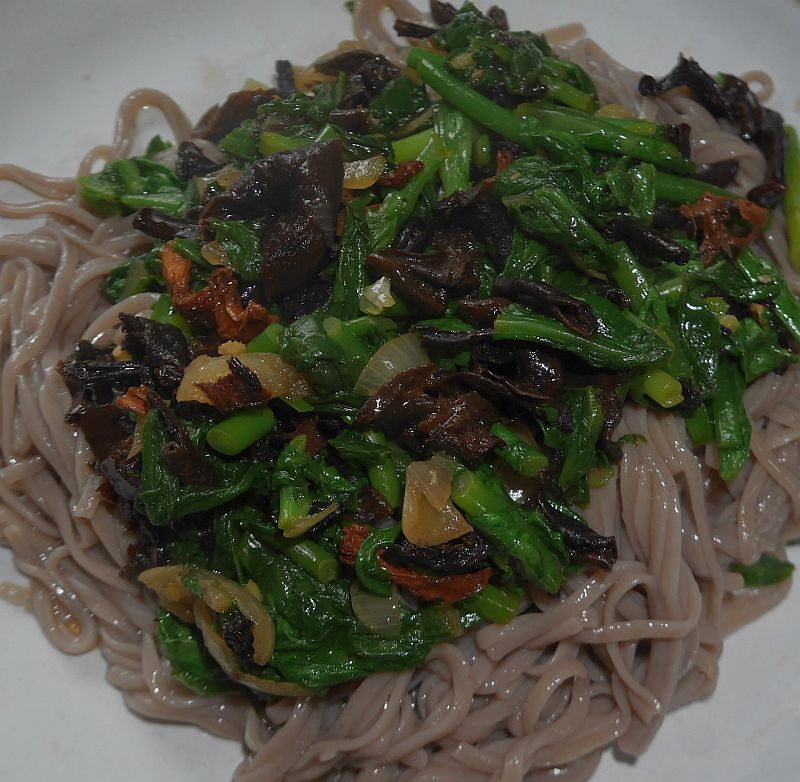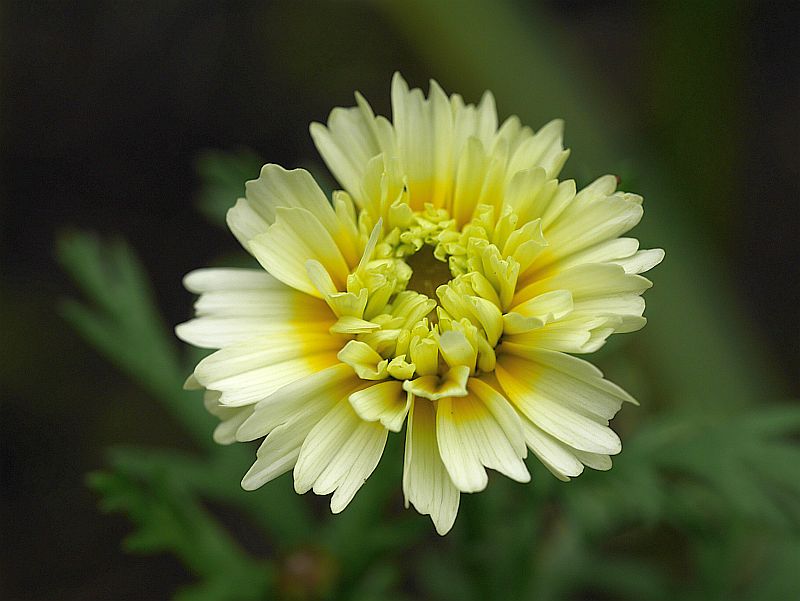I have a special fascination for vegetables that are superstars in one part of the world but hardly known in others and one of those is garland chrysanthemum or crown daisy (Glebionis coronaria / Chrysanthemum coronarium) a wild and extremely common herb of early spring in Mediterranean countries, often growing in large quantities, and commonly available in supermarkets in Japan where it’s known as shungiku. It had started to become available in Europe in vegetable catalogues in the 1970s and became known as chopsuey greens. I started growing it in the 1980s, not very successfully as it went quickly to seed in our long northern summer days, better in the years when I had a greenhouse in which I could sow in March.
This year, I started seed very early indoors and plants have for the first time been quite productive. Last night I made a soba (buckwheat pasta dish) with stir fried chopsuey greens and garlic scapes (with white wine, ginger, chili and soy sauce as flavourings). Chopsuey greens have a similar “aromatic” taste common to many other Asteraceae, including perennials like Aster scaber, Aster tripolium and Ligularia fischeri. Try substituting these perennials in chopsuey greens recipes.
I wrote an article about shungiku in the Norwegian herb magazine Grobladet, see
At the time, I couldn’t find much evidence of this plant having been used traditionally in the Mediterranean countries. However, thanks to the many ethnobotanical studies over recent years to document the Mediterranean diet, it has now been registered as eaten both raw and cooked both in Spain, Italy (including Sicily) , in a number of studies in Turkey as well as Palestine and Morocco. It is also sometimes cultivated.
More specifically, leaves and young shoots are used in the Mediterranean countries in salad (both raw and cooked), in pies, as a cooked vegetable, in a Turkish dish unlama (flour, garlic and lemon juice) and in Moroccan bakoula salad, usually made with mallow leaves, but spinach and /or kale are substituted for them (see, for example, http://www.mymoroccanfood.com/home/bakoula-with-spinach-and-kale)






